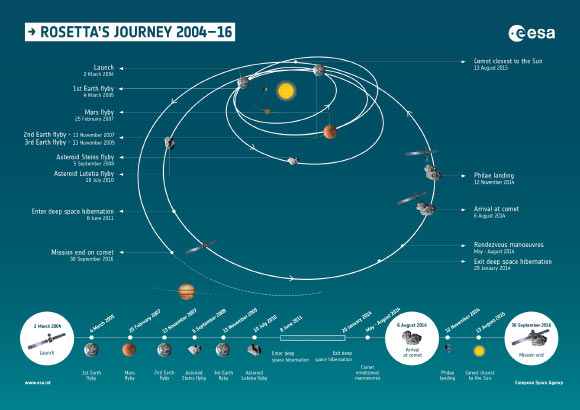ESA’s Rosetta mission has concluded as planned, with the controlled impact onto Comet 67P/Churyumov-Gerasimenko.

An artist’s impression of Rosetta approaching the nucleus of Comet 67P/Churyumov-Gerasimenko. Image credit: ESA / AOES Medialab.
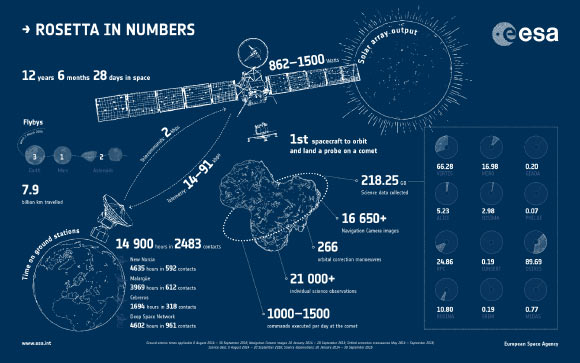
Rosetta’s mission lasted 12 years 6 months and 28 days, from launch on March 2, 2004 to mission end on September 30, 2016. During that time, the spacecraft traveled some 4.9 billion miles (7.9 billion km), including three gravity assist flybys at Earth and one at Mars, and two asteroid flybys. Traveling from Earth and eventually out towards the orbit of Jupiter, the vast distance between the spacecraft and the Sun, and spacecraft and Earth, has impacted on available solar power and data downlink capabilities respectively, as detailed in the graphic. The majority of remaining figures shown apply to Rosetta’s time at 67P/Churyumov-Gerasimenko, between August 6, 2014 and the end of September 2016, although navigation camera images and science observations began again during the approach to the comet, following the spacecraft’s wake up from deep space hibernation on January 20, 2014. Image credit: ESA.
Confirmation of the end of the Rosetta mission arrived at ESA’s control centre in Darmstadt, Germany, at 7:19 a.m. EDT (4:19 a.m. PDT, 11:19 a.m. GMT, 1:19 p.m. CET) with the loss of signal upon impact.
Rosetta had targeted a region on the small lobe of Comet 67P/Churyumov–Gerasimenko, close to a region of active pits in the Ma’at region.
The final descent gave Rosetta the opportunity to study the comet’s gas, dust and plasma environment very close to its surface, as well as take very high-resolution images.
“Rosetta has entered the history books once again. Today we celebrate the success of a game-changing mission, one that has surpassed all our dreams and expectations, and one that continues ESA’s legacy of ‘firsts’ at comets,” said ESA’s Director General Johann-Dietrich Wörner.
“Thanks to a huge international, decades-long endeavor, we have achieved our mission to take a world-class science laboratory to a comet to study its evolution over time, something that no other comet-chasing mission has attempted,” said Dr. Alvaro Giménez, ESA’s Director of Science.
“Rosetta was on the drawing board even before ESA’s first deep-space mission, Giotto, had taken the first image of a comet nucleus as it flew past Halley in 1986. The mission has spanned entire careers, and the data returned will keep generations of scientist busy for decades to come.”
ESA’s senior science advisor Dr. Mark McCaughrean said: “as well as being a scientific and technical triumph, the amazing journey of Rosetta and its lander Philae also captured the world’s imagination, engaging new audiences far beyond the science community.”
“It has been exciting to have everyone along for the ride.”
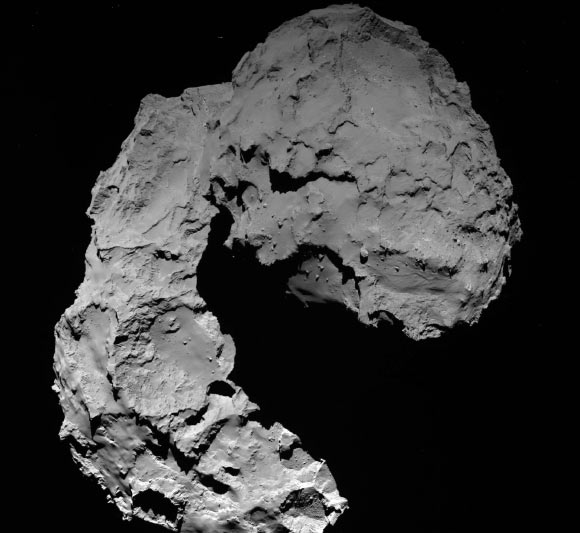
OSIRIS wide-angle camera image taken at 11:49 a.m. GMT on September 29, 2016, when Rosetta was 22.9 km (14.2 miles) from Comet 67P/Churyumov-Gerasimenko. Image credit: ESA / Rosetta / MPS / OSIRIS Team / UPD / LAM / IAA / SSO / INTA / UPM / DASP / IDA.

Single frame enhanced NavCam image taken on September 30, 2016, at 00:27 a.m. GMT, when Rosetta was 18.1 km (11.2 miles) from the center of the nucleus of Comet 67P/Churyumov-Gerasimenko. Image credit: ESA / Rosetta / NAVCAM / CC BY-SA IGO 3.0.
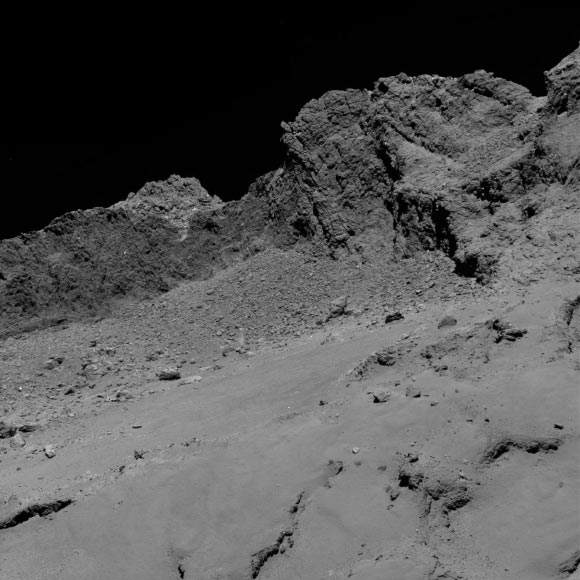
Rosetta’s OSIRIS narrow-angle camera captured this image of Comet 67P/Churyumov-Gerasimenko at 1:20 a.m. GMT from an altitude of about 16 km (9.9 miles) above the surface during the spacecraft’s final descent on September 30, 2016. Image credit: ESA / Rosetta / MPS / OSIRIS Team / UPD / LAM / IAA / SSO / INTA / UPM / DASP / IDA.
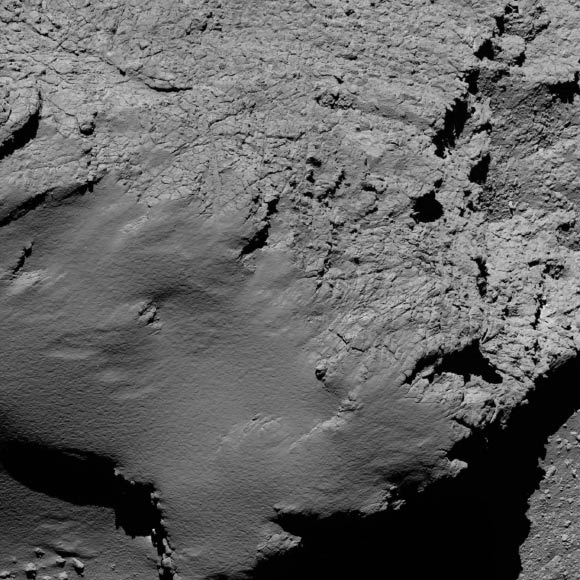
Rosetta’s OSIRIS narrow-angle camera captured this image of Comet 67P/Churyumov-Gerasimenko at 6:53 a.m. GMT from an altitude of about 8.9 km (5.5 miles) during the spacecraft’s final descent on September 30, 2016. Image credit: ESA / Rosetta / MPS / OSIRIS Team / UPD / LAM / IAA / SSO / INTA / UPM / DASP / IDA.
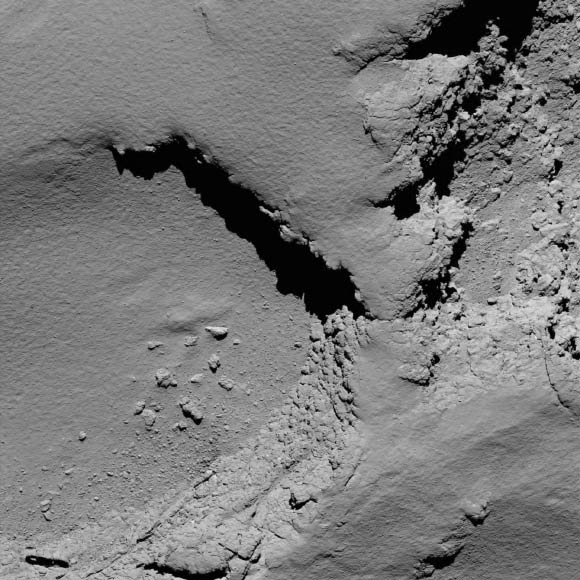
Rosetta’s OSIRIS narrow-angle camera captured this image of Comet 67P/Churyumov-Gerasimenko at 8:18 a.m. GMT from an altitude of about 5.8 km (3.6 miles) during the spacecraft’s final descent on September 30, 2016. Image credit: ESA / Rosetta / MPS / OSIRIS Team / UPD / LAM / IAA / SSO / INTA / UPM / DASP / IDA.
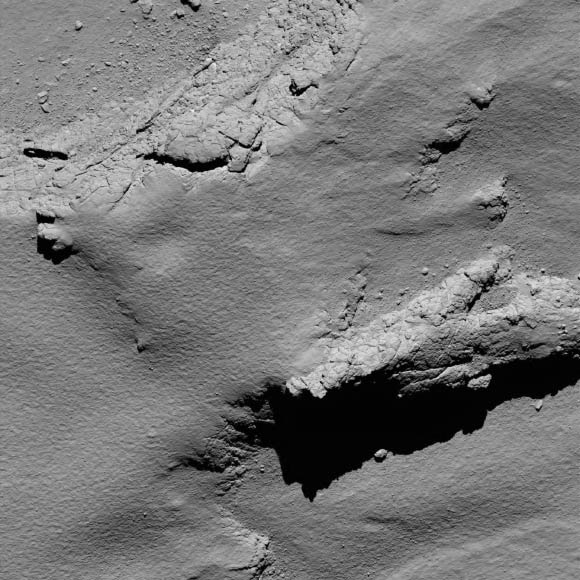
Rosetta’s OSIRIS narrow-angle camera captured this image of Comet 67P/Churyumov-Gerasimenko at 8:21 a.m. GMT during the spacecraft’s final descent on September 30, 2016. Image credit: ESA / Rosetta / MPS / OSIRIS Team / UPD / LAM / IAA / SSO / INTA / UPM / DASP / IDA.
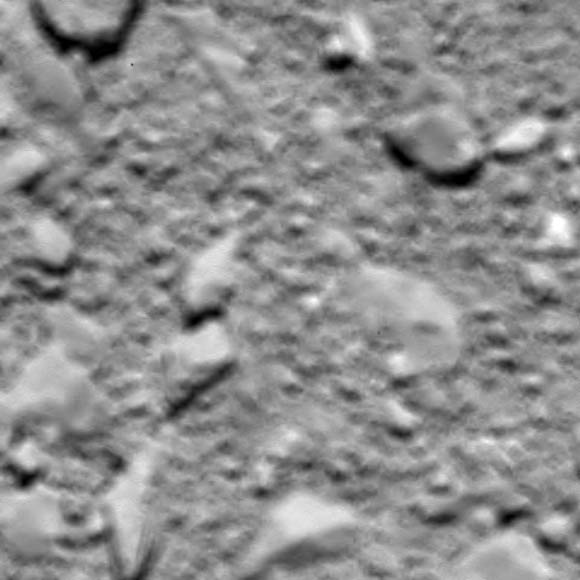
This is Rosetta’s last image of Comet 67P/Churyumov-Gerasimenko, taken shortly before impact, an estimated 20 m (66 feet) above the surface. The initially reported 51 m (167 feet) was based on the predicted impact time. Now that this has been confirmed, and following additional information and timeline reconstruction, the estimated distance is now thought to be around 20 m; analysis is ongoing. The image was taken with the OSIRIS wide-angle camera on September 30, 2016. Image credit: ESA / Rosetta / MPS / OSIRIS Team / UPD / LAM / IAA / SSO / INTA / UPM / DASP / IDA.
“We’ve operated in the harsh environment of the comet for 786 days, made a number of dramatic flybys close to its surface, survived several unexpected outbursts from the comet, and recovered from two spacecraft safe modes,” added operations manager Sylvain Lodiot.
“The operations in this final phase have challenged us more than ever before, but it’s a fitting end to Rosetta’s incredible adventure to follow its lander down to the comet.”
Mission manager Patrick Martin said: “with the decision to take Rosetta down to the comet’s surface, we boosted the scientific return of the mission through this last, once-in-a-lifetime operation.”
“It’s a bittersweet ending, but in the end the mechanics of the Solar System were simply against us: Rosetta’s destiny was set a long time ago. But its superb achievements will now remain for posterity and be used by the next generation of young scientists and engineers around the world.”
“Just as the Rosetta Stone after which this mission was named was pivotal in understanding ancient language and history, the vast treasure trove of Rosetta spacecraft data is changing our view on how comets and the Solar System formed,” said Rosetta project scientist Dr. Matt Taylor.
“Inevitably, we now have new mysteries to solve. The comet hasn’t given up all of its secrets yet, and there are sure to be many surprises hidden in this incredible archive. So don’t go anywhere yet – we’re only just beginning.”

